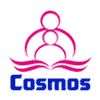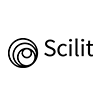The Effect of Combined Exercise with Coffee Consumption on Fasting Blood Sugar Levels and Abdominal Obesity in Overweight Middle-aged Prediabetic Men
Abstract
Pre-diabetes is defined as an increase in blood glucose levels above normal, but not to the extent that it is considered diabetes. One way to control the progression of diabetes is to eat a healthy diet and exercise. Accordingly, the aim of this study was to investigate the effect of combined exercise and coffee consumption on fasting blood sugar and middle-aged pre diabetic men. In this study, 44 overweight middle-aged men with (body mass index of 28.3 ± 2.8 kg / m2) were purposefully selected and randomly divided into four groups of 11: Exercise Combination, coffee consumption, combined exercise + coffee consumption and control group were divided. Pre-test and post-test groups including weight, body mass index, percentage of fasting fat and blood glucose were measured 24 hours before and after the project. The training groups then performed the training protocol for 8 weeks, three sessions per minute and 90 minutes each session. The coffee and exercise + coffee group consumed 10 grams of coffee every other day. Data were analyzed using covariance test and significance level of 0.05. The results showed a significant decrease in body mass index, fat percentage and serum concentration of fasting blood glucose in the exercise groups compared to the control group (P> 5%). This study showed that combined exercise with coffee can be effective in controlling fasting blood sugar and abdominal obesity.
Keywords
Full Text:
PDFReferences
Association AD. Diagnosis and classification of diabetes mellitus. Diabetes care 2010; 33(Supplement 1):S62-S9 https://doi.org/10.2337/dc10-S062
O'Brien J A, Shomphe L A, Kavanagh P L, Raggio G, Caro JJ. Direct medical costs of complications resulting from type 2 diabetes in the US. Diabetes care 1998; 21(7):1122-8. http://doi: 10.2337/diacare.21.7.1122. PMID: 9653606.
Rahmanian K, Shojaei M. Relationship of pre-diabetes and diabetes mellitus with cardiovascular risk factors: A Case-Control study. Pars Journal of Medical Sciences 2018; 15(4):1-8.
Butte NF. Impact of infant feeding practices on childhood obesity. Journal Nutrition 2009; 139: 412–6.
Barzin M, Hosseinpanah F, Arzhan S, Azizi F. Trends Of obesity And Abdominal Obesity In Tehranian adults (1999-2008). Researcher Bulletin of Medical Sciences (PEJOUHANDEH) 2012; 16(5 (83)):212-218. https://www.sid.ir/en/journal/ViewPaper.aspx?id=261995
Mirzaeian S, Esmaillzadeh A, Hoshyarrad A, Rashidkhani B. Association Between Nuts Consumption and Abdominal Obesity, Overweight and Obesity in Female Adolescents: An Epidemiological Study. Iranian Journal of Endocrinology and Metabolism 2013; 15(3): 244-324.
Derakhshan R, khoshnood A, Balaee P. Evaluation of Abdominal Obesity Prevalence in Diabetic Patients and Relation with Other Factors of Metabolic Syndrome. Iranian Journal of Endocrinology and Metabolism 2010; 12 (3):208-212. http://ijem.sbmu.ac.ir/article-1-776-en.html
Salem Z, Sheikh Fathollahi M, Rahnama A, Amin F, Iranmanesh F. Determination of Serum Vitamin D And its Association with Abdominal Obesity, Hypertension and Impaired Fasting Glucose Among Employed Women. Razi Journal of Medical Sciences 2015; [cited 2021; 22(138):59-67.https://www.sid.ir/en/journal/ViewPaper
Tadibi V, Bayat Z. The Effectiveness of 8-week aerobic exercise and drug modification on metabolic indices in women with type 2 diabetes. Journal of Kermanshah University of medical sciences 2012; 16(5) e77353.
Yavari A, Najafipoor F, Aliasgarzadeh A, Niafar M, Mobasseri M. Effect of aerobic exercise, resistance training or combined training on glycaemic control and cardiovascular risk factors in patients with type 2 diabetes. Biology of Sport 2012; 29(2):135.
Balducci S, Zanuso S, Cardelli P, Salvi L, Bazuro A, Pugliese L, et al. Effect of high-versus low-intensity supervised aerobic and resistance training on modifiable cardiovascular risk factors in type 2 diabetes; the Italian Diabetes and Exercise Study (IDES). PloS one 2012; 7(11):e49297.
Thom E. The effect of chlorogenic acid enriched coffee on glucose absorption in healthy volunteers and its effect on body mass when used long-term in overweight and obese people. Journal of International Medical Research 2007; 35(6):900-8.
Wijarnpreecha K, Thongprayoon C, Ungprasert P. Coffee consumption and risk of nonalcoholic fatty liver disease: a systematic review and meta-analysis. European journal of gastroenterology and hepatology 2017; 29(2):e8-e12.
Ghalavand A, Delaramnasab M, Afshounpour M, Zare A. Effects of continuous aerobic exercise and circuit resistance training on fasting blood glucose control and plasma lipid profile in male patients with type II diabetes mellitus. Journal Diabetes Nursing 2016; 4 (1):8-19[In Persian].
URL: http://jdn.zbmu.ac.ir/article-1-146-fa.html
Moeini M, Salehi K., Salehi Z., Kargarfard M., Sadeghi M. Effect of Resistance Exercise On Fasting Blood Glucose And 2 Hours After In Coronary Artery Disease Patients: A RANDOMIZED Clinical Trial. Journal of Clinical Nursing and Midwifery 2014; 3(1):28-36. [In Persian].https://www.sid.ir/en/journal/ViewPaper.aspx?id=377088
YousefipoorP Tadibi V, Behpoor N, Parnow, Delbari M, Rashidi S. Effects of aerobic exercise on glucose control and cardiovascular risk factor in type 2 diabetes patients. Medical Journal of Mashhad University of Medical Sciences (2015); 57(9): 976-984.
Pesta DH, Goncalves RL, Madiraju AK, Strasser B, Sparks LM. Resistance training to improve type 2 diabetes: working toward a prescription for the future. Nutrition and metabolism 2017; 14(1):1-10
Jorge M, Oliveira V, Resende N, Paraiso L, Calixto A, Diniz A. The effects of aerobic, resistance, and combined exercise on metabolic control, inflammatory markers, adipocytokines, and muscle insulin signaling in patients with type 2 diabetes mellitus. Metabolism clinical and experimental 2011; 60(9): 1244-52.
Kazemi N, Kordi M, Noori R, Kasraian M. The effect of aerobic and resistance training program on fasting blood sugar levels and insulin in women with gestational diabetes. Armaghane danesh 2016; 21(3):249-64.
Strasser B, Pesta D. Resistance training for diabetes prevention and therapy: experimental findings and molecular mechanisms. BioMedical research international 2013 http://doi: 10.1155/2013/805217.
Taghian F, Kargarfard M, Kelishadi R. Effects of 12 Weeks Aerobic Training on Body Composition, Serum Homocysteine and CRP Levels in Obese Women. Journal of Isfahan Medical School 2011; 29(149):1037-1045. https://www.sid.ir/en/journal/ViewPaper
Baharloo S, Taghiyan F, Hedayati M. Effect of aerobic exercise on glucose, insulin and insulin resistance in subclinical hypothyroidism overweight-obese women. Razi Journal of Medical Sciences RJMS 2014; 21 (125):75-84http://rjms.iums.ac.ir/article-1-3416-fa.html
Kazemzadeh Y, Banaeifar A, Shirvani H, Gharaat A. The effect of high intensity interval training HIIT on body composition, lipid profile and insulin sensitivity in overweight young men. Physiology of sport and physical activity 2016. 9(2):1385-1394. https://www.sid.ir/en/journal/ViewPaper.
Saremi A. Sporting Exercises and Diabetes Mellitus Type 2: A Review on Evidences. Journal of Cell and Tissue (JCT) Review Article 2011; 2(3): 171-181.
Cho A S, Jeon SM, Kim M J, Yeo J, Seo KI,Choi M-S, et al. Chlorogenic acid exhibits anti- obesity property and improves lipid metabolism in high-fat diet-induced-obese mice. Food and Chemical Toxicol 2010; 48 (3): 937-43. doi: 10.1016/j.fct.2010.01.003. Epub 2010 Jan 12. PMID: 20064576.
DOI: http://dx.doi.org/10.18415/ijmmu.v8i7.2871
Refbacks
- There are currently no refbacks.
Copyright (c) 2021 International Journal of Multicultural and Multireligious Understanding

This work is licensed under a Creative Commons Attribution-NonCommercial-NoDerivatives 4.0 International License.
https://ijmmu.com
editor@ijmmu.com
facebook.com/ijmmu
Copyright © 2014-2018 IJMMU. All rights reserved.



































